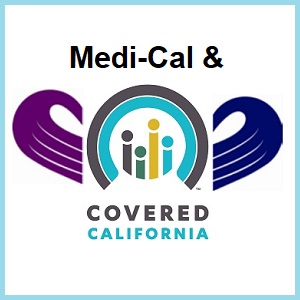
While it is fairly easy to apply for Medi-Cal through Covered California, transitioning from Medi-Cal to Covered California is not automatic. Medi-Cal will not automatically enroll you or any of your family members into a private health plan if you are no longer eligible for Medi-Cal. This means some household members may be paying too much for their health insurance and the worst-case scenario is there will be a lapse in coverage.
If you are on MAGI Medi-Cal, that was facilitated through Covered California based on monthly income, your eligibility for Medi-Cal will be terminated when you report an increase of income that makes you or your dependents no longer eligible for Medi-Cal. The termination of Medi-Cal is considered a qualifying life event – Loss of Coverage – and you are eligible for a Special Enrollment Period of 60 days to enroll in a health plan through Covered California with a subsidy or off-exchange directly from a health insurance company with no subsidy.
Medi-Cal Will Not Update Plan Selection in Covered California
When Medi-Cal determines you are no longer eligible for the program, they remove the Soft Pause that was in place on your Covered California account, allowing you to select a plan.
Medi-Cal will not select a plan for you and they will not enroll you in a plan.
If your Medi-Cal coverage ends on the last day of the month, you can enroll in a health plan on the last day of the month to start the next day. For example, Medi-Cal notifies you your coverage will end February 29, 2020. You can apply for a private health plan through Covered California with the subsidies, or off-exchange with no subsidy, and have the plan become effective March 1, 2020, by applying on February 29th. In this scenario, you will have no lapse in coverage.
However, if you wait to enroll on March 1st, the plan will not be effective until April 1st. This can happen even IF other people in the household are already enrolled in a health plan through Covered California or direct with a health insurance carrier. Health plans are not retroactive. You have until March 15th to enroll in a health plan to start April 1st if you miss the February 29th deadline, you will have a lapse in coverage.
You have a total of 60 days to enroll in a health plan. After 60 days from the date of termination, April 29th in this scenario, your Special Enrollment Period window has closed and you cannot enroll in ANY health plan. California outlawed short-term medical plans in 2018, so those temporary health plans are no longer an option.
Medi-Cal Changes Can Affect Covered California Subsidy Amount
Not only will Medi-Cal not enroll you in a plan, if your household situation changes (income increase, income decrease, additional family members, etc.) and there are members in Covered California, they will not update the current plan with any changes to the subsidy.
For example, I have a client who just had a baby. Medi-Cal updated the Covered California account to reflect an increase in the household size from 2 to 3 members – mom and baby still have Medi-Cal. But the father’s Covered California enrollment still had a subsidy based on a household size of 2. They called to wonder why his premium had gone up by $40.
The premium went up because even though Medi-Cal increased the household size, they did not update the father’s plan enrollment. When I finalized his plan with the higher subsidy based on a household size of 3, his monthly net premium dropped.
To make any changes to your Covered California account, either you or Medi-Cal have to submit the change through the Report a Change function. The next step, which Medi-Cal does not take, is to update the plan enrollment.
If Medi-Cal makes any changes to your account through Covered California, and you have family members who are in a private health plan through Covered California, you need to finalize the new plan. In the above scenario, an additional subsidy was applied to lower the health insurance premium. If the Medi-Cal change would reduce the subsidy (such as in the event of a loss of household member) the subsidy may decrease. If you don’t update the plan, you may be receiving too much subsidy and you may have to repay part or ALL of the subsidy when you file your federal or state income tax return for 2020.
Covered California is aware of this gap of Medi-Cal action that can lead to a lapse in coverage. They are discussing automatic enrollment when someone is terminated from Medi-Cal coverage. But I have not heard anything about having Medi-Cal do plan updates for existing Covered California members if Medi-Cal makes a change that affects the monthly premium tax credit subsidy.


